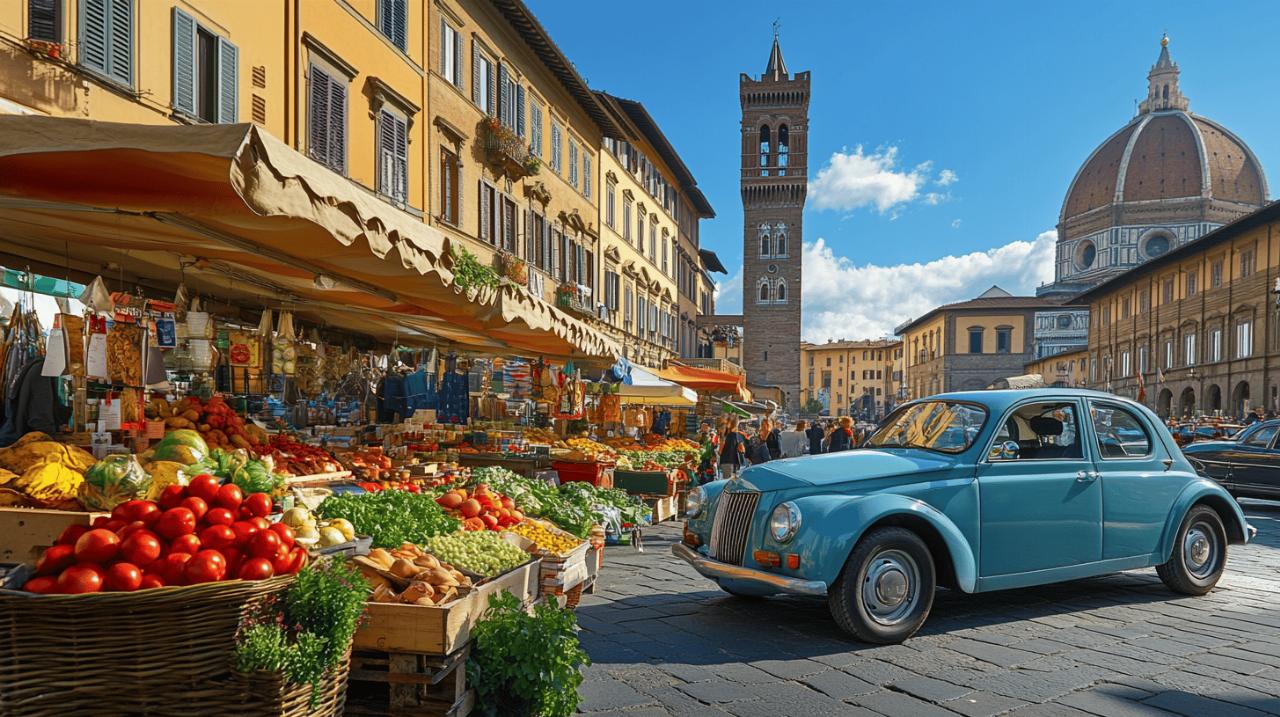Florence, the cradle of Renaissance art and architecture, offers much more than just galleries and monuments. Its vibrant markets pulse with authentic Italian life, creating sensory experiences that connect travellers with the very heart of Tuscan culture. From the aroma of fresh pasta to the supple texture of handcrafted leather goods, Florence’s marketplaces invite you to immerse yourself in a shopping adventure unlike any other European destination.
Discover florence’s historic marketplaces
Florence is a city that naturally beckons visitors outdoors, encouraging exploration of its magnificent streets and squares. The markets of this Tuscan capital aren’t merely places to shop—they’re vital social institutions as significant to Florentine culture as the city’s famed monuments. These bustling hubs offer a wonderful opportunity to reconnect with the world, experiencing a feast for all senses whilst browsing through local treasures. Planning your exploration of these markets can be made easier with useful resources available on https://www.topguide-travel.de/ to enhance your travel experience.
The legendary mercato centrale
The San Lorenzo Market area represents one of Florence’s most iconic shopping districts, divided into two distinct sections. The outdoor portion encircles the magnificent Basilica of San Lorenzo, with vendors displaying an array of Tuscan goods from leather journals to colourful scarves. However, the true jewel of this district is the Mercato Centrale—an impressive indoor market housed in a stunning 19th-century structure designed by Giuseppe Mengoni, who masterfully employed iron, glass, and cast iron to create a light-filled cathedral of commerce.
Since its opening in 1874, the Mercato Centrale has evolved considerably, with a significant renovation in 2014 transforming it into a culinary paradise. Today, it serves as a vibrant hub where shopping, dining, and the celebration of Tuscan culinary traditions merge seamlessly. Vendors offer everything from freshly made pasta and aromatic truffles to locally produced olive oils and robust Chianti wines. The market exemplifies Florence’s commitment to preserving traditional food crafts while embracing modern gastronomic innovations. 
Hidden gems at santo spirito market
While San Lorenzo draws many visitors, the Sant’Ambrogio Market provides a more authentic glimpse into everyday Florentine life. As the oldest market in Florence, established on 29 May 1873, it boasts a distinguished heritage that parallels the San Lorenzo Market. Also designed by Giuseppe Mengoni, this market features a similar yet more intimate iron and glass structure, creating a welcoming atmosphere for locals and discerning travellers alike.
Sant’Ambrogio has earned a reputation as the beating heart of its neighbourhood, where longtime residents shop alongside chefs from nearby restaurants. The market offers an unfiltered view into the soul of Florence, with vendors who have maintained family stalls for generations and who proudly showcase seasonal Tuscan produce. For those seeking to venture beyond tourist trails, the Oltrarno district surrounding Santo Spirito reveals artisan boutiques along Via Santo Spirito, Borgo San Jacopo, and Borgo San Frediano, where contemporary craftspeople continue Florence’s legacy of exceptional handmade goods.
Navigate florence like a local
Truly experiencing Florence means embracing its rhythm and pace, which often involves moving beyond conventional tourism. The city’s compact historic centre makes it ideal for exploration via alternative transportation methods that allow travellers to weave through narrow Renaissance streets and discover hidden market quarters that tour buses simply cannot reach.
Electric bikes through renaissance streets
Navigating Florence’s cobblestone pathways between markets becomes an adventure in itself when done on an electric bicycle. These eco-friendly vehicles provide just enough assistance to conquer Florence’s gentle hills without diminishing the pleasure of cycling through history. An electric bike allows visitors to efficiently travel between distant market locations like the Mercato delle Pulci (Florence’s charming flea market) and the prestigious shopping district of Via de Tornabuoni, where luxury fashion houses display their wares in Renaissance palaces.
The freedom of cycling enables spontaneous stops at smaller neighbourhood markets that appear throughout the week in various piazzas. These temporary markets often specialise in specific goods, from antique books to seasonal foods, providing authentic shopping experiences far from the tourist crowds. With an electric bike, even the journey to The Mall Firenze, a luxury outlet destination outside the city centre, becomes an enjoyable excursion through the Tuscan landscape.
Vespa tours around market districts
For a quintessentially Italian experience, exploring Florence’s market districts by Vespa combines practicality with undeniable style. Guided Vespa tours can introduce visitors to markets across different neighbourhoods, from the famous jewellery shops lining the Ponte Vecchio to the historic Santa Maria Novella Pharmacy, which has been selling exquisite fragrances and herbal remedies since 1221.
A Vespa journey through Florence allows travellers to discover the city’s leather-crafting heritage, with stops at the renowned Scuola del Cuoio (Leather School) where artisans demonstrate centuries-old techniques. When shopping for Florence’s celebrated leather goods, knowledgeable guides can help identify authentic craftsmanship by pointing out the supple texture, natural aroma, tight stitching, and the fleur-de-lys symbol that indicates superior quality.
Timing these Vespa market explorations to coincide with Florence’s major seasonal sales in January-February or July-August can transform an ordinary shopping excursion into an extraordinary treasure hunt through one of Italy’s most beloved cities. The combination of wind in your hair, the purr of the Vespa engine, and the discovery of market treasures creates memories that capture the essence of la dolce vita.